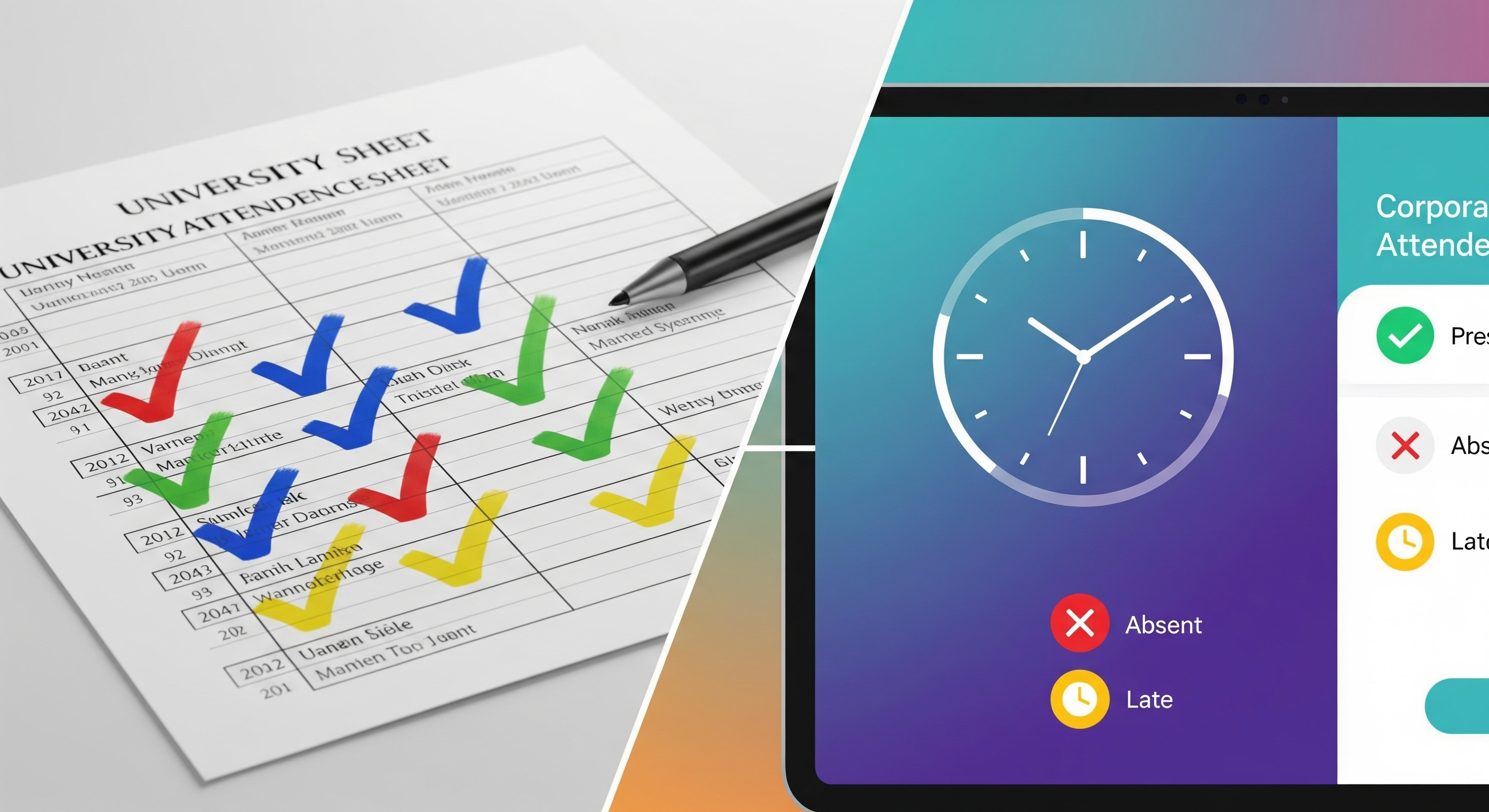From University Rules to Corporate Culture: How Attendance Tracking Works

Attendance is one of those habits that starts early in life and follows us everywhere. In school, it is the sound of your name being called during roll call. In university, it becomes a percentage that could determine whether you are even allowed to sit in your final exams. And when you enter the working world, it takes the form of biometric scans, online timesheets, and HR software tracking every minute you are on the job.
Whether we like it or not, attendance is more than just a rule — it is a reflection of commitment, responsibility, and discipline. The way attendance is tracked may change from lecture halls to office cubicles, but the principle remains the same: being present matters.
Attendance in Universities and the Famous 75% Rule
If you have ever been a university student, you have probably heard of the 75 percent attendance requirement. Many universities around the world set this rule to make sure students attend classes regularly and actively participate in their learning. The logic is simple. If you are not in class, you are missing out on important discussions, concepts, and updates that can directly impact your grades.
In most cases, falling below the required attendance percentage means you could be barred from exams or your internal marks could take a hit. This rule can be stressful for students who juggle part-time jobs, internships, or personal responsibilities, but it is designed to keep academic engagement high.
Traditionally, attendance in universities was recorded manually by professors calling out names at the start of class. Over time, technology brought in student ID card scanners, QR code systems, and even biometric devices. However, issues like proxy attendance and human error still make accurate tracking a challenge.
If you are curious about exactly how your attendance percentage is calculated, there is a simple formula to find out. You can check the step-by-step method here: How to Calculate Attendance Percentage.
How Attendance Tracking Changes in the Workplace
Once you graduate and step into the corporate world, the way attendance is handled changes quite a bit. Companies are less concerned with the number of classes you attend and more focused on the number of hours you work or the results you deliver.
Most businesses have set working hours, whether it is the traditional 9 to 5, rotating shifts, or a hybrid model where you work partly from home. Your attendance might be tracked through biometric fingerprint scanners, ID card swipe systems, or online attendance portals where you log in and out each day.
Some organizations even use project management and time-tracking tools to monitor work progress alongside physical presence. Unlike universities, where the penalty for low attendance is missing exams, in a workplace the consequences could be salary deductions, loss of paid leave, or even disciplinary action.
Why Attendance Still Matters After Graduation
In university, being present means you are absorbing knowledge and keeping up with the curriculum. In a workplace, it signals reliability and accountability. Even with flexible schedules and remote work becoming more common, companies still value punctuality and consistency.
For employees, good attendance builds trust with managers and colleagues. For employers, it ensures productivity, smooth operations, and fair distribution of workload. In some industries like healthcare, manufacturing, or government services, maintaining proper attendance records is also a legal requirement.
While there is a growing shift toward judging employees more by performance than hours spent at a desk, attendance still plays an important role in workplace culture and team collaboration.
Comparing University and Corporate Attendance Systems
It is interesting to see how similar and different these systems can be. In universities, attendance is a measure of learning engagement. In workplaces, it is a measure of productivity and accountability. Both rely on tracking presence, but the methods and consequences vary.
In a university, missing too many classes could impact your grades or eligibility for exams. In a corporate job, frequent absences could affect your performance review, promotions, or even job security. While students often have less flexibility in attendance requirements, employees might be able to negotiate flexible hours, remote work days, or time-off arrangements.
The Future of Attendance Tracking
Technology is transforming the way attendance is recorded and managed. Artificial intelligence is already being used to predict absenteeism trends in both educational and corporate settings. Geofencing allows organizations to confirm if someone is physically present in a specific location before marking them present. Attendance systems are increasingly being integrated with performance data, giving a more complete picture of both presence and productivity.
We may even see more advanced systems using facial recognition, mobile app check-ins, and real-time data sharing between departments. While the tools may evolve, the purpose will remain the same, to ensure participation, accountability, and fairness.
Final Thoughts
From sitting in a university lecture to working in a corporate office, attendance tracking follows us throughout our lives. It changes form, adapts to new technology, and serves different purposes, but it always reflects the same principle, showing up matters. Whether you are a student aiming to keep your attendance above 75 percent or an employee working toward consistent punctuality, being present is often the first step toward success.
And if you are ever unsure about your own attendance percentage or how close you are to meeting your required target, you can easily figure it out using the calculator: Attendacne Pro Calculator
- Marketing & Social Media
- AI & Digital Tools
- Science & Innovation
- Business & Finance
- Education & Learning
- Technology & Gadgets
- Family & Relationships
- Parenting & Kids
- Fashion & Beauty
- Travel & Culture
- News & Politics
- Κεντρική Σελίδα
- Literature
- Music
- Networking
- άλλο
- Party
- Religion
- Shopping
- Sports
- Theater
- Wellness
- Art
- Causes
- Crafts
- Dance
- Drinks
- Film
- Fitness
- Food
- Gardening
- Health
- Παιχνίδια



